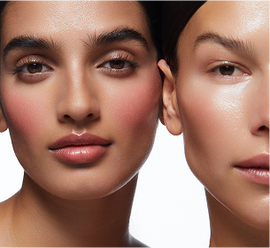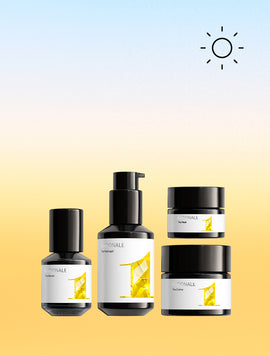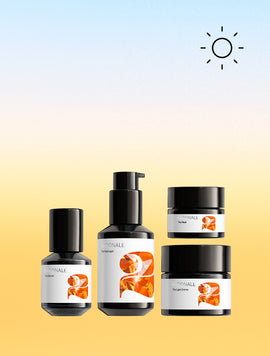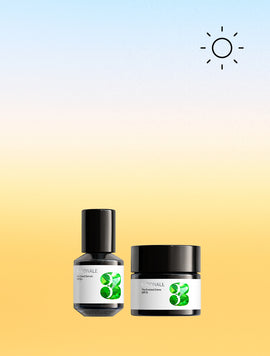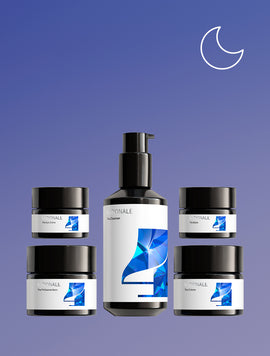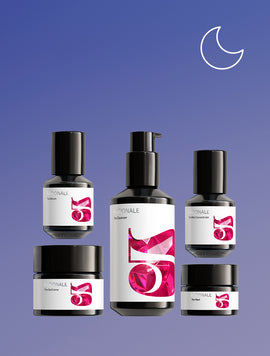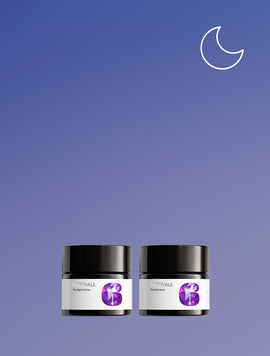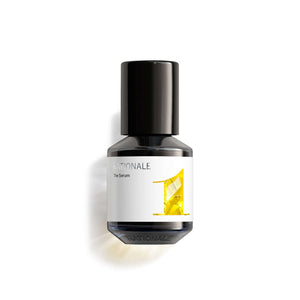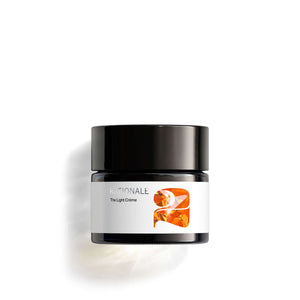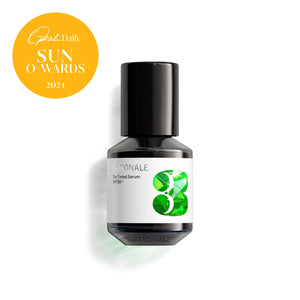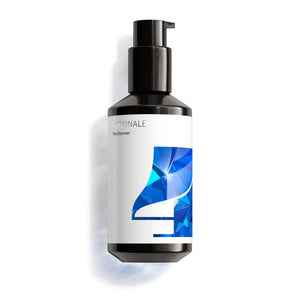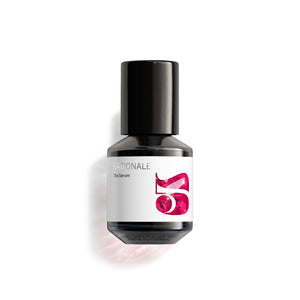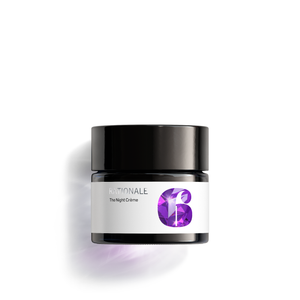Often dismissed as a teenage rite of passage, acne is anything but. Globally affecting an estimated 9.4% of the population, acne is one of the most prevalent skin conditions.
Often referred to as pimples, blemishes, breakouts, or congestion, it affects not only adolescents but also a significant number of adults. Epidemiological studies reveal that many adults, particularly women, continue to experience acne well into their 40s.
As common as acne is, for those living with it, breakouts feel deeply personal. At RATIONALE, we understand that this condition affects more than the complexion; it affects self-confidence, mood, and even the way people move through their daily lives.
In this journal, we’ll explore what acne is, why it occurs, and why some complexions are more prone to breakouts, and how blemishes and congestion form is an essential first step towards our clients achieving calmer, clearer, more resilient skin.

What is Acne?
Acne is defined as a chronic inflammatory skin condition that develops when hair follicles become clogged with excess sebum (the skin’s natural oil) and dead skin cells accumulate, creating congestion beneath the surface. When this environment changes, blemishes and inflammation appear.
It arises when four processes converge:
1. Sebum overproduction under the influence of androgens (hormones, such as testosterone)
2. Dead skin cells shedding irregularly, clogging hair follicles.
3. Proliferation of bacteria in the microbiome.
4. Inflammatory immune response, often triggered before lesions are visible.
What are the different types of acne?
No two blemishes are the same. Acne presents in a spectrum, from mild congestion to more severe, inflamed blemishes:
Comedonal acne (clogged pores)
Blackheads: Pores blocked but open to the surface, darkened by oxidation. Whiteheads: Pores blocked and sealed at the surface, forming small white bumps.
Papulopustular acne (inflamed blemishes)
Papules: Red, raised bumps without pus. Darkened by oxidation. Pustules: Similar bumps but with a visible white or yellow centre.
Nodulocystic acne (deep congestion)
Nodules: Large, firm, painful lumps beneath the skin. Cysts: Deep, pus-filled lesions that can increase the risk of scarring.
While dermatologists use “acne” as a medical diagnosis, many clients recognise it more simply as blemishes or congestion. These terms are less clinical, but they describe the same visible experience.

What is Acne-Prone Skin?
Acne-prone skin is skin that has a natural tendency to develop blemishes and congestion more easily than other skin types
Those who are more predisposed may experience:
Frequent or recurring blemishes in predictable areas (such as the T-zone or jawline).
Blemishes triggered by stress, hormones, or product changes
Persistent congestion
Skin may be oily or dry but reactive

Lifestyle factors
Diet and acne: The relationship between diet and acne is nuanced. High-GI foods such as sugary drinks, processed snacks, and dairy products, may affect the prevalence of acne.
New skincare routines: Introducing actives like retinoids or acids can temporarily accelerate cell turnover, bringing underlying congestion to the surface, often called purging.
Biological factors
Hormonal acne: Particularly in adult women, acne is driven by androgen sensitivity. Acne typically appears around the jawline and may flare pre-menstrually.
Cystic breakouts: Deep, painful blemishes beneath the skin, often slow to heal and more likely to leave marks. Dermatological care is recommended for this type of breakout.
Fungal acne (Malassezia Folliculitis): Not true acne, instead, it is an overgrowth of yeast within hair follicles, producing uniform, itchy bumps, often on chest, back, or forehead.
Stress acne: Stress does not create pores or oil glands, but it sensitises the system. Under stress, sebum composition changes, barrier recovery slows, and inflammatory pathways intensify, making blemish-prone skin more likely.
After Blemishes: Marks and Pigmentation
Even after blemishes clear, they can leave visible reminders:
Post-inflammatory hyperpigmentation (PIH): Flat, dark spots where inflammation has triggered excess melanin.
Atrophic scars: Textural depressions such as ice-pick or boxcar scars, caused by collagen breakdown.
Raised scars: Hypertrophic or keloid scars, more common in some skin types.
Common questions about acne
Q: Is squeezing blemishes or popping pimples bad?
A: Yes. Squeezing blemishes forces material deeper, rupturing follicle walls and worsening inflammation. It also increases risk of infection, scarring, and pigmentation.
Q: Does the sun help acne?
A: No. While UV can temporarily dry the skin, it worsens inflammation, pigmentation, and long-term ageing. Many acne treatments also increase photosensitivity, making daily SPF protection essential.
Q: Is Vitamin C good for acne-prone skin?
A: Yes, but with nuance. Stabilised Vitamin C has antioxidant and anti-inflammatory benefits. It can help with post-acne pigmentation and oxidative stress. It works best as part of a broader, balanced ritual.
Key insights
- Acne is a multifaceted inflammatory skin condition, not simply “clogged pores.”
- Blemishes and congestion are the visible outcome of imbalances in sebum production, skin shedding, microbiome balance, and inflammation.
- Breakouts can be influenced by hormones, stress, diet, and lifestyle.
Experiencing blemishes and congestion?
Learn more about RATIONALE’s approach to skin health and explore our formulations designed to restore clarity and balance.

